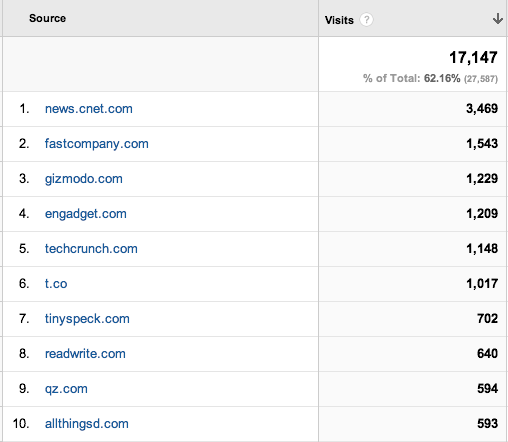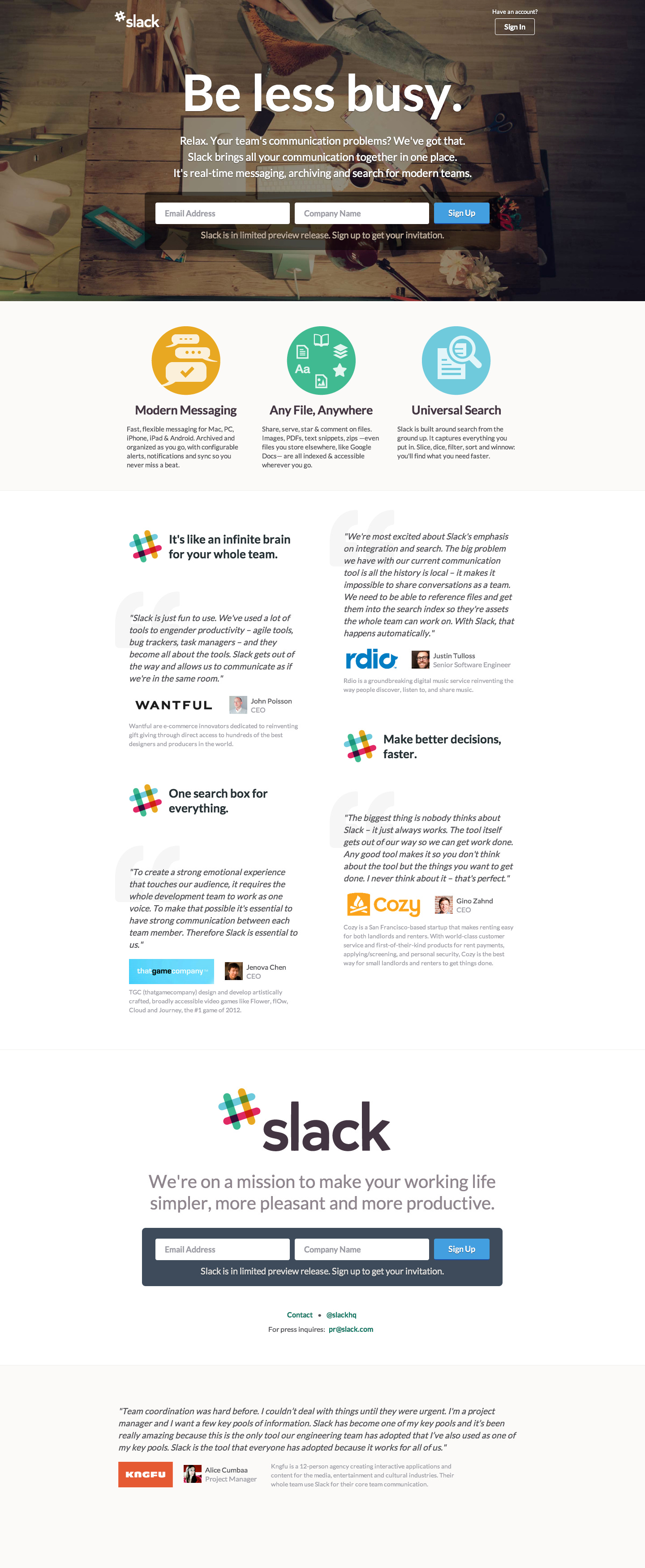Preview releasing Slack
First launch of Slack to the world. Burndown to Preview Release. The Status Game of Silicon Valley. Now what, Slack?
Choose your analogy: fish or cut bait, put up or shut up, shit or get off the pot. No matter how you framed the situation, the urgency of our moment had escalated. It was go time.
All the work we’d done exploring and getting some proof on Slack’s positioning, figuring out how to work together internally, getting inspired to take on our challenge of not selling saddles, sure it was undoubtably great. It was valuable and the best kinds of hard fun.
But the facts remained: we were a $0-revenue startup, burning through a limited stash of money, ripping through connections and friends to find people to trial Slack, with fewer than 200 real users on our unlaunched and free product.
Now we needed to find out if we had something that people cared about, that they were willing to get past the Suck Hump of new product adoption to try, and that they were willing to use as a team every day at work. It was time to sink or swim, our first real moment of truth.
We picked a launch day: August 14, 2013. A Monday to maximize the impact of our public relations (PR) story. Sunrise in New York was 6:03 am. We had to be ready.
Burndown
We started a team-wide burndown list of tasks that needed to get done prior to launch. That spreadsheet grew as each team member reviewed it and added in their own items. Then the list of tasks grew and shrank — new ones added as we discovered or remembered them, completed tasks crossed off.
We did a daily Skype call every morning, each member of the team represented by a different bird avatar, no video feed needed, the flock of us gathering at 10 am to coordinate work. We were focused and full speed ahead. We worked hard.
And even with a world-class team going all out, as we approached our deadline, tasks fell off the burndown list like water off a shaking dog. A post-launch list got started. Our ambitions exceeded our resources. We prioritized and deferred, realism defeating idealism.
On my task list lived items like writing the website copy, getting an intro video, finding reference customers and testimonial quotes, supporting our PR activities, tracking our results. We had a very aspirational story to tell so we knew we couldn’t be the only ones telling it. Our reference customers and testimonial quotes became my priorities so we had many voices corroborating our story. Those multitudes might hold it aloft and make it real. Maybe.
I worked with our investors Andreessen Horowitz and Accel to invite in their portfolio companies. We wanted one final push to juice our numbers a bit and get more eyes on the sign up experience to smoke out any lingering bugs.
A few days before August 14 we entered the final stages. It felt like being on a plane after a long taxi on the tarmac, finally on the runway, ready to accelerate. Perhaps that was my hope finding its metaphor. Perhaps we really would take off.
“Preview Release?”
In the manner of many things on a small team, it’s hard to remember who came up with the phrase “Preview Release,” but it stuck and we went with it. To us, it meant a debut, but not full doors open. A tease of what could come. A glimpse (we hoped) of the promised land to come.
We also felt that calling our launch a “Preview Release” earned us a little latitude for imperfections with users. Maybe it did. It certainly earned us the opportunity to control access, with invitations doled out as we chose. It limited our risk and let us fix bugs as they cropped up without everyone seeing them. Our single-page website said, “Sign up to get your invitation.”
An intro video proved too hard and time consuming to do, so it got moved to the post-launch list. We stripped down our public face to the essentials: one web page, one thank you page, one confirmation email to folks who signed up. We reused parts of copy we’d already grown fond of and that felt gently battle tested. As we neared our deadline anything unessential fell away.
For the Preview Release, Stewart had committed us to goals that we felt were pretty ambitious.
50% of top 10 tech blogs
25k visitors to site
1k signups
200 new teams
To put those goals in perspective, let’s consider our starting point. We had next to zero public profile so how would we get the top tech blogs cover us? We had a few dozen visitors to our site per week, how could we ramp that up to 25,000. We had no signups and fewer than 20 existing teams using Slack.
Yikes, I thought. How could we hit those goals?
Silicon Valley as royal court
One of the things that became clear to me doing the Preview Release of Slack and working on the marketing and sales of Slack over the following 7 years is that Silicon Valley acts like a royal court. Though unnamed and untitled, there are kings and queens, courtiers and jesters, earls and dukes and pretenders and visitors.
Like any long-running story series (think soap operas or professional wrestling or Greek mythology), Silicon Valley has obvious characters that appear and reappear in their roles: the seasoned and grizzled veteran, the dewy ingenue disruptor, the distant visiting sage, the calculating operator, the disgraced prince. I once visited the Palais de Versailles to learn about King Louis XIV and his concentration of power and prestige. The echoes from that history to present-day Silicon Valley started to appear plain as day to me as I worked at Slack.
But Silicon Valley mostly hides its operation like a magician hides their magic. PR drives the Valley yet nerds and those of us with an analytic, logical mindset don’t like how PR works. It doesn’t make sense. It’s abstract and fuzzy and opaque, full of story points, social connections, personal history and signifiers. It’s messy and there are no published rules to learn, examine and optimize for. Why did some outlets cover some stories but not others? How come we hear about the same people all the time? This product is excellent, why should its founders have to beg for coverage?
And I would go further and say that the public coverage of Silicon Valley’s royal court is a status game. Everyone knows it but no one talks about it. Once I started to see PR that way it made much more sense to me.
I’m not saying that Silicon Valley is unique as a status game either. My hunch is that Washington and NYC and every other insular town in the world where humans compare themselves to each other (meaning, everywhere) are just as much status games, only played on different scales with different players in the roles.
Before Slack, I had played around the edges of PR, but never really participated deeply or successfully. I wasn’t a player and I didn’t have a player to present so we focused not on the main court but in minor courts. As we ramped up our PR work for Slack’s Preview Release, it finally dawned on me how the game really worked like a royal court. And in Stewart, we had a prince of Silicon Valley, returning to the court.
Okay, that’s all the abstract, so here’s a bit on how we did it. We worked with an agency called Outcast, through our investors Andreessen Horowitz, as well as our very own PR maestro, Rebecca Reeve. If you’re not familiar with PR, these were the folks behind the scenes with the social and professional relationships and with the storytelling talent to package people and news and get coverage.
They built the story of Slack behind the coverage of Slack. They ran the outreach campaign to reporters. They managed the relationships and set up the interviews and wrote the briefing documents. They knew exactly how the Silicon Valley game was played and they were some of the best in the world at playing it. We benefitted immensely from having them on our team, in the background.
So did we get 50% of the top 10 tech blogs? We certainly did, and our PR acted as the main driver of those results.
Stewart also understood very clearly how the game was played and was masterful at playing it. He spent a huge portion of his time leading up to the Preview Release with the PR folks, figuring out the story to tell, reviewing outreach lists, coordinating interviews (pre-briefings because they happened before the news was released), doing interviews, delegating follow up items, working his own connections. I got to ride shotgun on many of those calls and help out in a few small ways. It all proved incredibly revealing.
We trafficked in our Slack story. It led us from no attention to a foothold of attention. It drove us to our Preview Release goals. It was the single largest driver of our initial success. And because Stewart was a prince, he was a story worth covering. What has the prince been up to? The prince has a new thing, do tell! We made sure to seed a quick reminder of how Flickr had been born from a failed game called Game Neverending and folks easily connected the dots. Slack could also be born from a failed game called Glitch!
Once 50% of the top tech blogs covered Slack the others had to as well. On our launch day traffic surged to the single-page Slack.com website. Over 8,000 people signed up to get an invitation to try Slack that day. By the end of the week, over 16,000 had signed up. Signups started to trail off after that first week but never really dipped below 500 per day. We were on our way.
Holy crap, I remember thinking. watching the coverage and signups flow in. Now we have something. I had never seen anything like it.
The work we’d put in had started to pay off. We had proven that we did have something people were curious about trying. People did want to believe there could be a product that would let them Be Less Busy.
We watched the signups flow into a channel in Slack called #leads. We picked a few out when we recognized prominent companies or people we wanted to ensure got the white-glove treatment when we did invite them to Slack. We had something people wanted.
Now what, Slack?
Our story shifts a bit here from a total shot in the dark, infinitely low-probability-to-succeed startup, to one with very strong initial promise, and yet still pretty long odds of success. Could we keep our success going? Could we get past our own Suck Hump to some semblance of a promised land? We had a slim chance.
That very last goal we had set for our Preview Release launch — 200 new teams — loomed in the distance as the next obstacle.
Inviting the keeners who had signed up to try to the product by email was the easy part. Making sure they succeeded? That was the trick of the business. And we’d find some inspiration for it in a game called Zork.
Up next:
#zork
A very distinct line divided digital people in general as well as all of us at Slack: growing up, did you play Zork or not?








